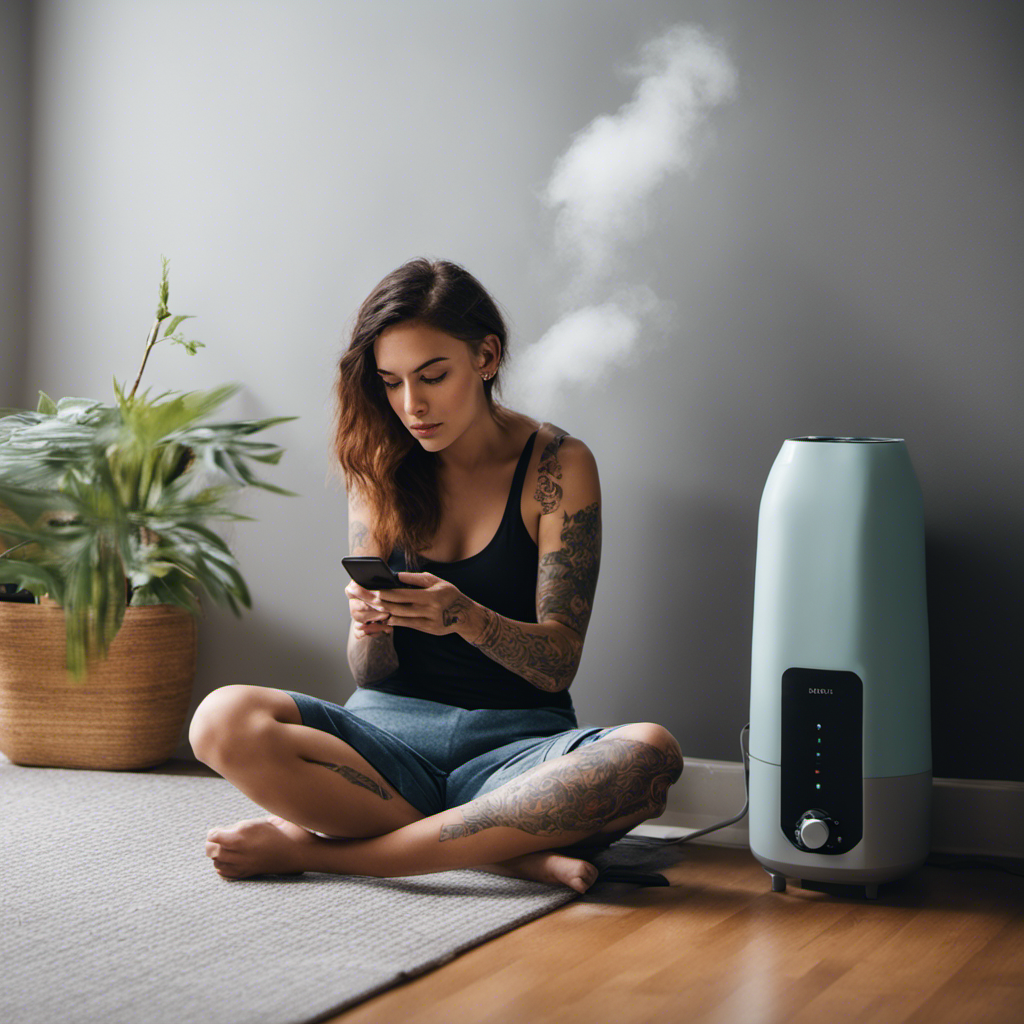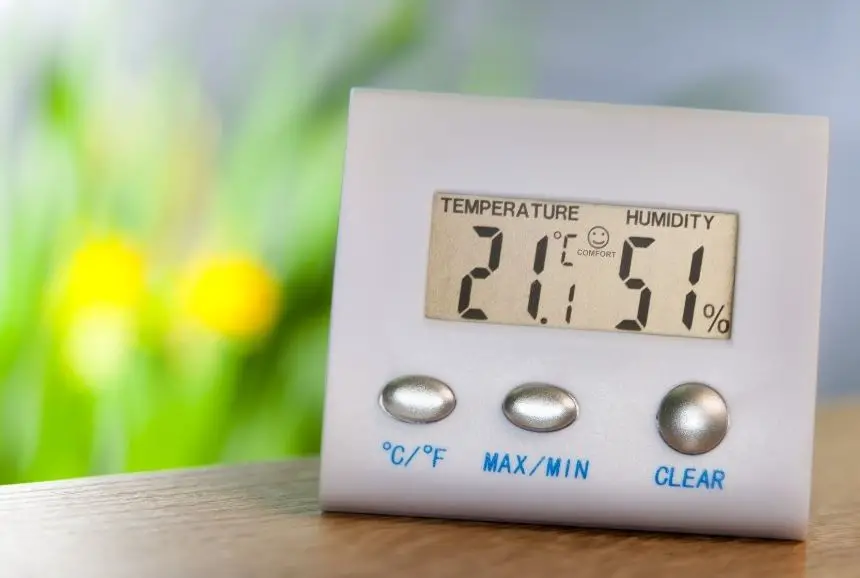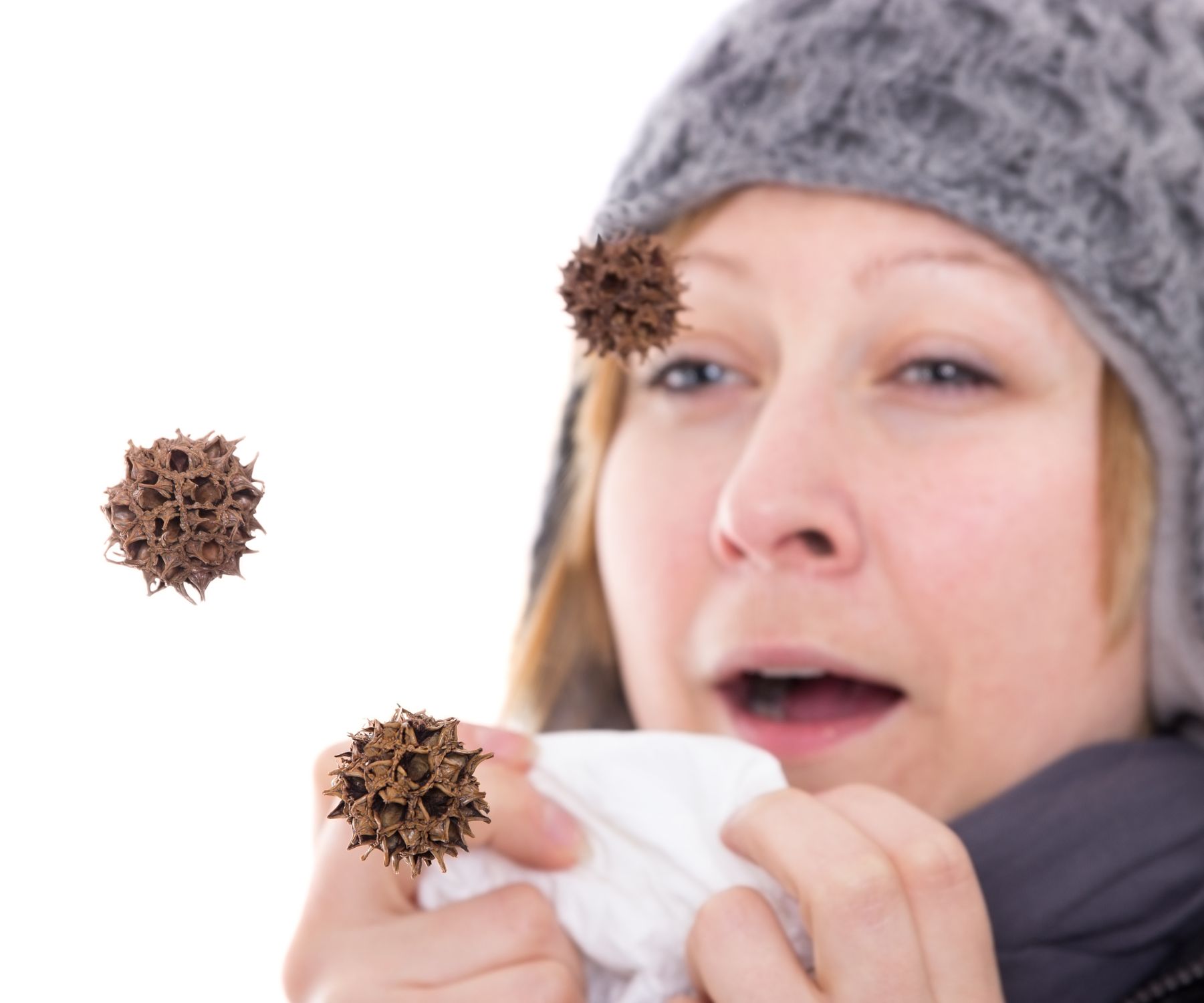Table of Contents
What is a Thermo Hygrometer?
A thermo hygrometer is a gauge that combines both a thermometer and a hygrometer in one measuring device.
What is a hygrometer and what is it used to measure?
A hygrometer is a device that is used to measure the relative humidity or the amount of moisture that is in the air.
The relative humidity is given as a percentage.
Hygrometers go by quite a few different terms.
Humidity checker, humidity sensor, humidity monitor, and humidity meter are all basically the same device though some may contain extra features here and there.
Most modern hygrometers combine a thermometer in a digital format that is easy to read.
 Hygrometer Uses
Hygrometer Uses
The number one use of a hygrometer is simply to give you a way to keep an eye on the relative humidity.
Why would you want to do that?
There’s a lot of reasons actually. This is by no means exhaustive.
1. Comfort
Humidity as a day to day factor affects your comfort level substantially. For instance a day that he is 80° could easily feel 100°. If the humidity outside is too high.
It also does a number on your hair.
But though comfort and stylish hair are two things we tend to value highly, the relative humidity can affect your health much more than you may have believed.
2. Health
Low humidity equals dry air and dry air can cause a whole lot of issues when it comes to respiratory and skin health.
Low humidity and dry air are usually associated with winter. And winter just happens to be the time of year when people are closed inside with the heater turned on.
It’s not exactly a coincidence that cold and flu germs spread easier during that time of year.
Humidity or the lack thereof during winter plays a big part of staying healthy during those months.
For instance
1. Low humidity dries out the mucus lining in your airways which creates a type of docking station in your sinuses for viral particles.
In other words, dry air makes it easier for germs to get stuck in your respiratory system easier.
2. Viral particles tend to decay faster in humid air.
Viruses and germs stay alive longer and dry air because moisture has a decaying effect on airborne particles.
3. And low relative humidity provides an easier path of transmission for viral particles.
When humidity droplets come in contact with airborne particles including bacteria and viruses, it makes it too heavy for the particles to float.
The result is they fall to the surface faster, giving you a lesser chance of breathing them in.
It’s amazing how just adding moisture to your air when the relative humidity has dropped,
not only keeps viruses from being able to travel as far,
it also causes them to decay much faster
and provides the right dampness inside your airways to fight off viruses.
Not to mention, the relief from the pain and irritation of having a dried out nose and throat.
The hygrometer is an easy way to keep track of the humidity level in the home during the winter to avoid excessively dry conditions that help viruses and germs prosper.
Hint: One of the symptoms of low humidity in your house is the presence of static electricity. If you find yourself getting shocked while walking and touching things in your house, check your hygrometer. The humidity has probably dropped.
3. Skin care
Humidity has a big impact on your skin.
Dry air and Dust pull the moisture out of your skin and cause it to become damaged and crack.
Dry and damaged skin allows the bacteria that causes acne to burrow deeper into the skin.
Which also causes the epidermal layer to produce an over abundance of oil, all to which adds up to an excellent breeding ground for acne.
A vicious circle.
Using a hygrometer to monitor the humidity in the air during the winter and adding moisture back into the air with the use of a humidifier,
can mean the difference in dry and broken skin versus naturally shiny and hydrated skin.
 4. Dust
4. Dust
Humidity has a “wetting” effect on airborne particles which is to say “Dust”.
Dry air allows dust particles to flow freely through the air and be kicked up every time you walk across the floor.
But adding the proper humidity back to a room, dust particles will come in contact with humidity droplets, which will cause a type of microscopic mud that will be too heavy to float and fall out of the ambient air.
5. Allergies
Humidity can affect allergies in a couple of different ways.
Low humidity allows pollen and other household allergens to travel easier and further through your home.
High humidity creates a breeding ground for dust mites and promotes mold growth which are also common household allergens.
Hygrometers are devices to help you maintain a healthy relative humidity between 40 and 60%. Which helps keep allergens from traveling as easy and dust mites from having the nutrition they need to expand.
High humidity is also thick which can be harder to breathe.
6. Cigars and humidors
Hygrometers are mentioned frequently in the world of cigar aficionados.
It’s because cigars require humidity to keep them fresh in their humidors.
Though it may not be a hobby that everyone embraces,
The people that do have a very great interest in it.
Which is a good thing for the rest of us because they also have some of the best recommendations for the best hygrometers and hygrometer calibration kits.
7. Mold damage
Excessive humidity leads to mold growth. And mold gone unchecked can cause significant damage in your home in a very short amount of time.
Keeping an eye on your hygrometer gauge will help you know when to add more or subtract more humidity to avoid structural damage to your home.
8. Plant life
Plants have a hard time in the winter when the humidity drops and the heater is blasting.
Monitoring your relative humidity with a hygrometer is an excellent way to make sure your plants are getting the amount of moisture out of the air that they need to thrive.
Recap
Thermal hygrometers are an indispensable tool for your home.
The relative humidity inside of your home has so many implications and effects on your health and property that keeping tabs on the humidity is essential.
Maintaining the proper relative humidity protects your personal health and the health of your family by keeping viruses and bacteria at Bay during the dry season.
It also helps keep your skin healthy and prevents the outbreak of acne. As well as providing relief from other skin ailments like psoriasis.
Finding the right hygrometer for your home can be as easy as looking to your friendly uncle who is a cigar aficionado.
Cigar aficionados are very particular about the humidity inside of their humidors.
Which makes their product research that much more detailed.
And also makes their recommendation for hygrometers and hygrometer calibration kits hold more weight.


 4. Dust
4. Dust